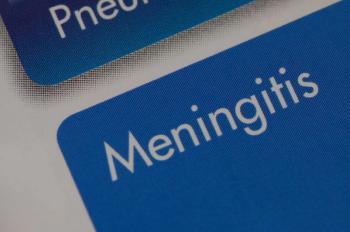
Q&A: How Syringe Access Underscores the Potential Impact of Pharmaceutical Tariffs
Marta Wosinska, PhD, senior fellow with The Brookings Institution, discussed her ongoing research regarding the potential impact of pharmaceutical tariffs on the prescription drug market.
Current developments regarding US tariffs on imported goods have been the center of attention for many foreign and American businesses. Despite a federal court blocking President Trump’s unilateral authority to impose them,1 experts are swarming to stay proactive in understanding the impact of pharmaceutical tariffs if they come to fruition in the near future.
And, according to Marta Wosinska, PhD, syringe access serves as the ideal example of how pharmaceutical tariffs may play out.
“If you look at just how critical syringes are; I once did an analysis that identified that 89% of inpatients get a drug that comes in a vial. If you don't have syringes, 91% of inpatients will not be able to get treatment. This is a massive footprint and potentially a major national security risk,” said Wosinska, who is a senior fellow with The Brookings Institution and has been deeply investigating the potential impact of pharmaceutical tariffs.2
Read through our recent conversation with Wosinska, who discussed the importance of syringes and their current role in the supply chain, as well as what she believes will happen if tariffs are to take effect in the near future.
Stay tuned for more from our conversation with Wosinska, who joined Drug Topics along with her colleague Joey Mattingly, PharmD, MBA, PhD, associate professor and vice chair of research at the University of Utah College of Pharmacy. The duo took a deep dive into potential pharmaceutical tariffs and how they may impact pharmacists and their practices.
Drug Topics: Can you start by discussing how the US typically sources its prescription drugs and the molecules used to create them?
Marta Wosinska: Where drugs come from, where they are made, really depends on the type of the drug. Most of the drugs that we take are generics. In the retail sector, more than 90% of volume are generic drugs. They are responsible for a much smaller share of spending. So, we use generics but pay for brands. If you look at those drugs, they are very heavily sourced from India. Volume-wise, almost two-thirds of volume for solid, oral-dose products that are generic come from India. You do also have a relatively large presence [in] Europe. If you move towards sterile injectables that are generic, you have a much bigger presence [in] the US actually, which I think might be surprising. But that's partly because so much of the volume are things like saline and that is actually made domestically. It's just too heavy, too expensive to ship, so it actually makes sense to make it in the US.
For branded drugs, it's really [the] US versus Europe. There's not much of a footprint anywhere else for the finished dosage form and also for the active pharmaceutical ingredient. The caveat is, and the listeners probably have heard, just how much exposure we have to China. The exposure to China is really in the upstream. Any drug that's chemically synthesized—so every generic, it's a small molecule—the key starting materials and auxiliary chemicals, the reagents, solvents, etc, those are pretty much guaranteed to be coming from China. So, it depends which drug type and also where in the supply chain we're talking about.
Drug Topics: What are the potential benefits the Trump Administration is aiming for if tariffs on prescription drug products are imposed?
Marta Wosinska: I'll answer it in 2 ways: One is how tariffs are supposed to work, and I will comment with where I do think they could work effectively, and then probably we're going to get into where they might not go over so well. So, the idea is as follows: Imagine that you have a drug that's being made in the United States and outside of the United States. And right now, the foreign manufacturer has a cost advantage. If you impose a tariff on them, that will push their prices up, and so the consumers or buyers will shift towards a domestic producer. So, the domestic producer will get a larger market share. They potentially could increase their price as long as they're still competitive relative to the foreign competitors. They will have an incentive to expand their production, and this brings in jobs, potentially de-risks our supply chains from adversaries. So that's the general concept. Where this breaks down is, you already have to have manufacturers here to protect, it works much better that way. Or entry has to be very easy and that's just not the case. But there are certain settings where a tariff can actually work quite well. The example that I frequently give are syringes.
If you think about syringes, to administer any drug that comes in the vial, you need a syringe. If you look at just how critical syringes are; I once did an analysis that identified that 89% of inpatients get a drug that comes in a vial. If you don't have syringes, 91% of inpatients will not be able to get treatment. This is a massive footprint and potentially a major national security risk. What has been happening is that, during COVID, China dramatically expanded their capacity for making syringes. We used to have, I think, 4 or 5 domestic manufacturers in the US making syringes. Basically, we got left with 1 because everybody else was driven out of the market because China, post COVID, started to pump out their product on the market. At the same time, FDA issued a warning to providers, saying, ‘Be careful about the Chinese syringes, we're seeing problems with them.’ So, you look at something like this, and you're like, we can't have this setup. We need to redirect buyers towards domestic syringes. The Biden Administration put on a tariff on syringes, which since then, because of tariffs on China, got increased. That actually restored production of all those facilities that, not too long ago, shut down. We actually have now a pretty robust supply of syringes that are made domestically. And that is how tariffs could work, and I would say that the syringes are a great example of that.
READ MORE:
Pharmacy practice is always changing. Stay ahead of the curve: Sign up for our
References
1. Schonfeld Z. Court of International Trade blocks Trump’s tariffs in sweeping ruling. The Hill. May 28, 2025. Accessed May 29, 2025. https://thehill.com/homenews/administration/5322889-court-rules-trump-tariffs/
2. Wosińska M. Will pharmaceutical tariffs achieve their goals? The Brookings Institution. March 27, 2025. Accessed May 29, 2025. https://www.brookings.edu/articles/pharmaceutical-tariffs-how-they-play-out/
Newsletter
Pharmacy practice is always changing. Stay ahead of the curve with the Drug Topics newsletter and get the latest drug information, industry trends, and patient care tips.






































































































































